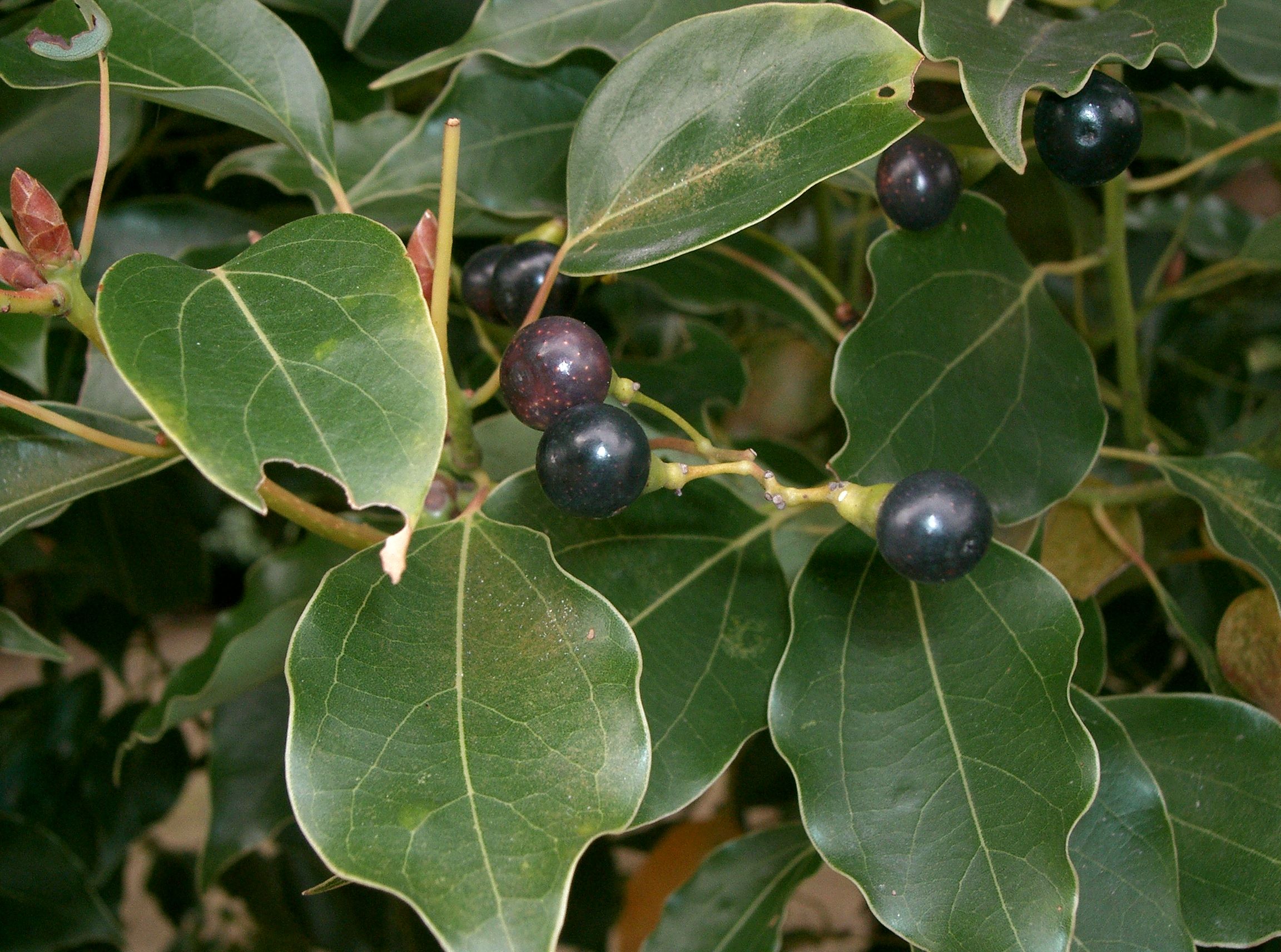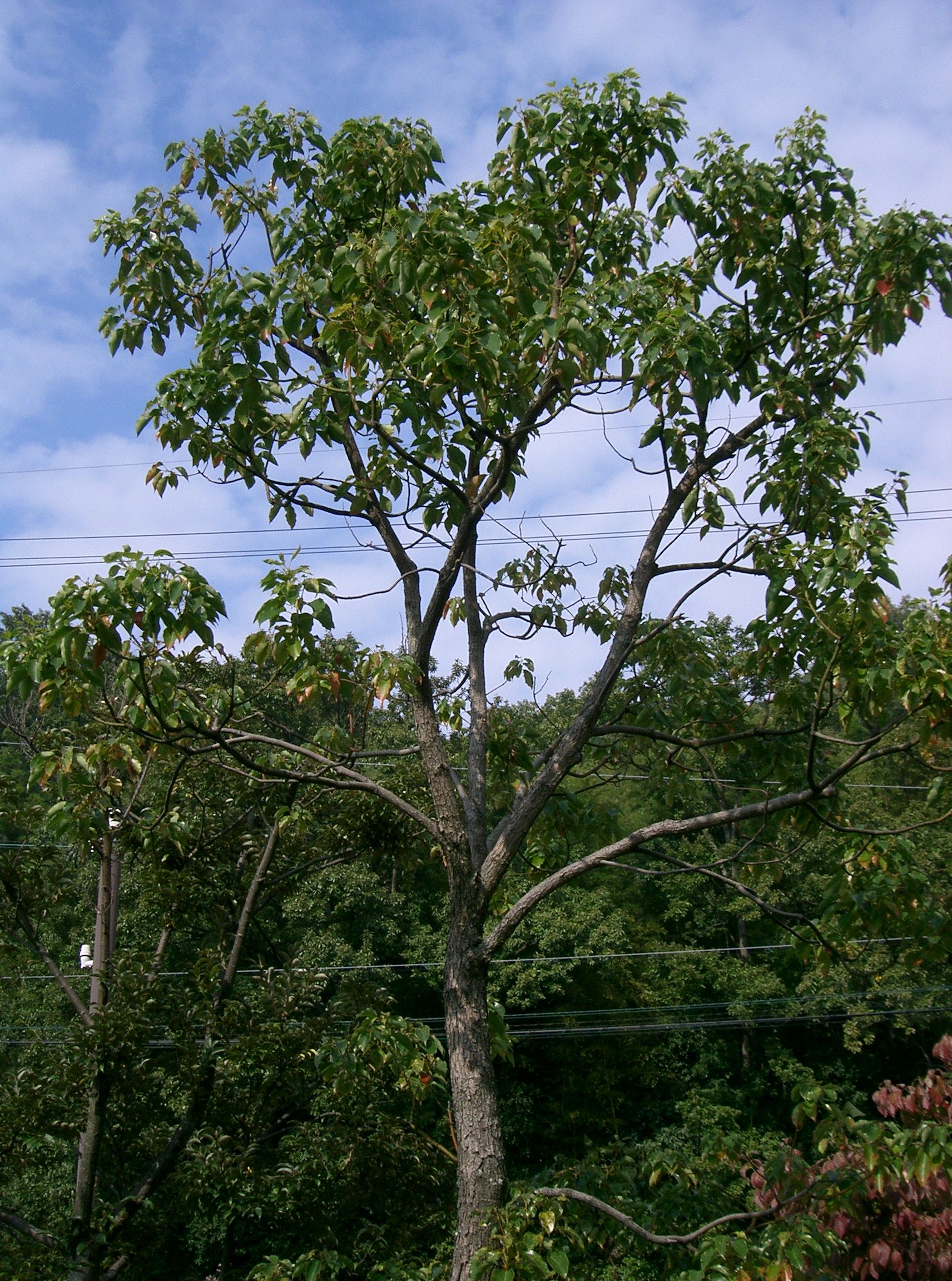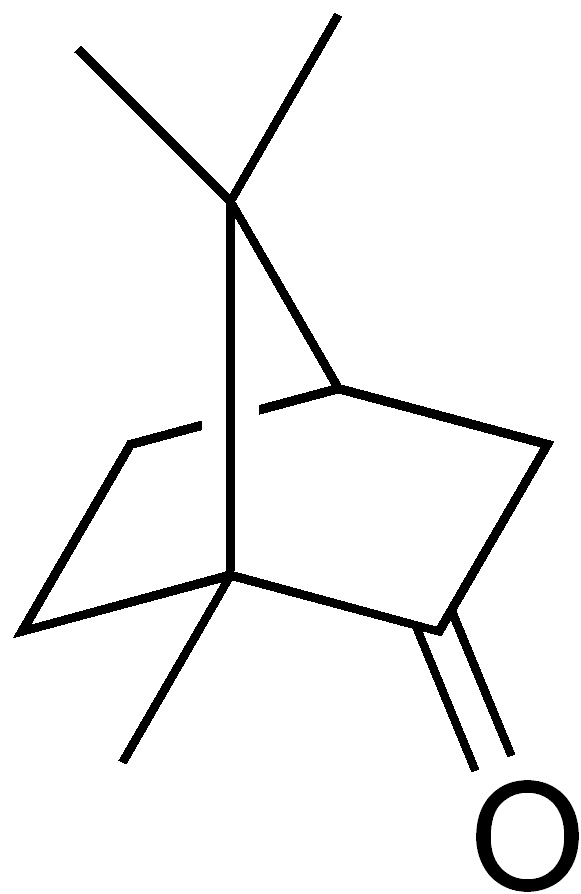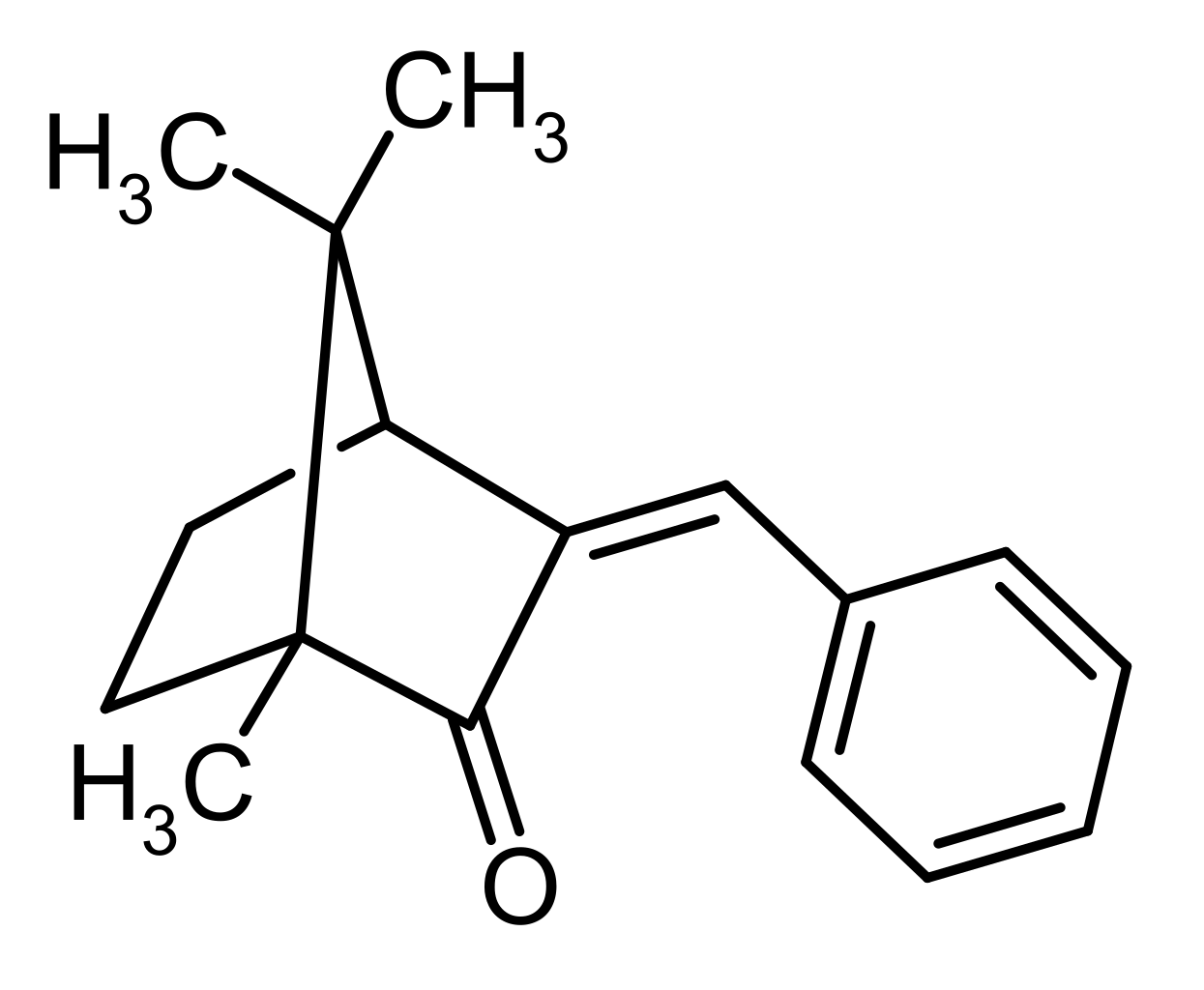|
Size: 8705
Comment:
|
← Revision 80 as of 2019-05-16 06:58:10 ⇥
Size: 12188
Comment:
|
| Deletions are marked like this. | Additions are marked like this. |
| Line 4: | Line 4: |
| Chemicals that interfere with hormone systems in animals and humans are called endocrine disruptors. These chemicals are capable of adversely affecting the hormone balance and embryo development of organisms and their offspring. [1] Camphor is one of these chemicals, it is a waxy, flammable, transparent solid with a strong aroma. It has the chemical formula C10H16O. Naturally occurring camphor is found in the fragrant camphor tree (Cinnamomum camphora) and it can also be artificially-made. It is used in UV sunscreens as 4-methylbenzylidene camphor C18H22O, the endocrine disruptive effects of camphor in these products has a weak estrogenic action and can alter sexual behaviour. [2] |
. In vertebrates, response to environmental stimuli and maintenance of homeostasis is insured by two main systems: the nervous and the endocrine systems. While the nervous system uses fast electrochemical action potentials delivered by neurons as messengers, the endocrine system uses slower chemical messengers called hormones, circulating through the blood. Hormones are involved in the regulation of several physiological functions such as reproduction, metabolism and energy balance, growth and development, immune response and maintaining blood homeostasis. Their production, release and reabsorption is finely regulated but can be altered by molecules or substances, called endocrine disruptors. This alteration can have direct consequences on the individuals but also on their offspring [1]. [[http://en.wikipedia.org/wiki/Camphor|Camphor]] (Figure 5) C,,10,,H,,16,,O, is a chemical compound used in sunscreens as a [[http://en.wikipedia.org/wiki/Ultraviolet|UV]]-blocker, that has recently been characterised as an endocrine disruptor (Figure 1,2,3,4) . Entering the organism through the skin, it has a weak oestrogenic effect, altering the sexual behaviour [2]. |
| Line 11: | Line 9: |
| == Camphor tree == '' Cinnamomum camphora '' |
||[[attachment:Cinnamomum_camphora_001.JPG|{{attachment:Cinnamomum_camphora_001.JPG|Camphor Tree|width="300"}}]] || ||[[attachment:Cinnamomum_camphora4.jpg|{{attachment:Cinnamomum_camphora4.jpg|Fruit and Leaves|width="300"}}]] || ||'''Figure 1''' : Camphor Tree Full Greenhouse. || ||'''Figure 2''' : Camphor Tree: Fruit & Leaves. || |
| Line 14: | Line 12: |
| [[attachment:Cinnamomum_camphora_001.JPG|{{attachment:Cinnamomum_camphora_001.JPG|Camphor Tree|width="300"}}]] [[attachment:Cinnamomum_camphora4.jpg|{{attachment:Cinnamomum_camphora4.jpg|Fruit and Leaves|width="300"}}]] | |
| Line 16: | Line 13: |
| [[attachment:Cinnamomum_camphora6.jpg|{{attachment:Cinnamomum_camphora6.jpg|Flowers|width="300"}}]] [[attachment:Cinnamomum_camphora2.jpg|{{attachment:Cinnamomum_camphora2.jpg|Camphor Tree|width="300"}}]] == Camphor == [[attachment:Camphor_structure.png|{{attachment:Camphor_structure.png|Camphor structure|height="400"}}]] ------ == Importance of Camphor == Camphor is widely used in sunscreens and other cosmetic products as a UV-filter. Human exposure to UV filters is influenced by many factors: geographic location, season, lifestyle, gender or occupation, this results in high individualization. For instance, a study in Australia showed 56% of people apply sunscreens at least 5 days per week, and 27% of people apply sunscreen two days or less a week.[5] In another study of 32 healthy volunteers, UV-filters were detected in the blood plasma after two hours and in urine samples after 24 hours from first application. [4] UV-filters, which are topically applied and absorbed through the skin, have been found in 96% of urine samples in the US and 85% of Swiss breast-milk samples. [3] The most relevant entry route of chemicals related to sunscreen use is dermal exposure, however considering common human behaviour related to sunscreen application, e.g. eating and drinking after applying sunscreen, gastrointestinal or pulmonary exposure should also be considered.[6] This shows a correlation between the increased use of the substance resulting in increased ingestion/absorption and therefore the increased possibility for adverse effects to occur. == Physiological effects of Camphor and its derivatives == ==== 4-methylbenzylidene camphor (4-MBC) ==== [[attachment:4-Methylbenzylidene_camphor.svg.png|{{attachment:4-Methylbenzylidene_camphor.svg.png|4-methylbenzylidene camphor|width="300"}}]] |
||[[attachment:Cinnamomum_camphora6.jpg|{{attachment:Cinnamomum_camphora6.jpg|Flowers|width="300"}}]] || ||[[attachment:Cinnamomum_camphora2.jpg|{{attachment:Cinnamomum_camphora2.jpg|Camphor Tree|width="300"}}]] || ||'''Figure 3''' : Camphor Tree Flowers. || ||'''Figure 4''' : Camphor Tree Full Nature. || |
| Line 33: | Line 18: |
| ==== 3-benzylidene camphor (3-BC) ==== [[attachment:3-Benzylidene_camphor_structure.svg.png|{{attachment:3-Benzylidene_camphor_structure.svg.png|3-Benzylidene|width="300"}}]] 3-benzylidene camphor 3-benzylidene camphor (3-BC) is closely related to 4-methylbenzilidene camphor and it is a lipophilic compound. In the EU it is used in sunscreens, with a maximal concentration of 2%. After 65 days of topical application to rats 3-BC was detected in all analysed tissues, including the brain, this suggests that in humans similar disposition and distribution may occur. In the urine of Danish children, the compound was not detected but the compound was found in human placenta. 3-BC has also been described as an estrogenic disruptor. Reports indicate that 3-BC can affect the CNS. Rats showed region- and sex-specific response in expression of genes involved in sexual behavior: PR, estrogen receptors (ERa, ERb), and steroid receptor coactivator-1 (SRC-1) in the brain when treated pre- and postnatally with 3-BC [6]. |
|
| Line 39: | Line 20: |
| Large quantities of in vitro and in vivo animal studies have shown that the UV-filters present in sunscreens and cosmetics have a large number of potential adverse effects. These adverse effects include developmental and reproductive effects, caused by the endocrine disrupting actions of these chemicals. Some other studies could not find such adverse effects. However, as many well-designed studies have shown the wide human exposure and the clear endocrine disruptive effects, these substances can be considered as substances of high concern in relation to human risk. Most of the studies regarding the adverse effects of UV‐filters have been evaluated after oral exposure. However, the primary exposure of humans is through dermal application via cosmetics. UV‐filters enter the body without being metabolised by the liver, this leads to a greater risk of the unaltered compounds reaching tissues of the whole body through the systemic circulation [7]. This was observed in rats following dermal exposure to 3‐BC. After topical application compared with oral exposure, a three‐fold greater oestrogenic effect of 4‐MBC was observed in rats, indicating higher fraction of an administered dose of the compound [8]. | |
| Line 41: | Line 21: |
| ------ | == Importance of Camphor == . Camphor is widely used in sunscreens and other cosmetic products as a UV-filter. Human exposure to UV filters differs according to many factors, such as geographic location, season, lifestyle, gender or occupation. This results in a high individualization. For instance, in Australia, 56% of people apply sunscreen at least 5 days a week, and 27% up to 2 days a week [5]. But frequent application of sunscreen could result in penetration of UV filters in the organism. Indeed, studies on healthy volunteers, show that UV-filters can detected in the blood plasma 2 hours after application, and in urine after 24 hours [4]. In the US, UV filters applied on the skin have been found in urine samples in 96% of cases. In Switzerland, 85% of breast milk samples tested contained traces of UV filters [3]. ||[[attachment:Camphor_structure.png|{{attachment:Camphor_structure.png|Camphor structure|height="400"}}]] || ||'''Figure 5''' : Camphor || ---- == Physiological effects of Camphor and its derivatives == . In sunscreen and other cosmetic products, 4-methylbenzylidene camphor (4-MBC), an organic camphor derivative, is used. Thus, its maximum amount has been limited at 4% by the [[http://en.wikipedia.org/wiki/Food_and_Drug_Administration|Food and Drug Administration (FDA)]].Because of its highly lipophilic nature, 4-MBC is absorbed through the skin and can been found in internal tissues, including placenta [6]. Increased use of sunscreen is correlated with increased 4-methylbenzylidene camphor (4-MBC) absorption and increased risk of adverse effects. Once in the organism, 4-MBC exhibits a toxic activity as oestrogenic endocrine disruptor [6]. Comparison of dermal ''vs'' oral exposure of 4-MBC (Figure 6) indicates that dermal exposure results in a three-time-greater oestrogenic effect in rats [8]. Studies on zebrafish embryos and cell cultures indicate that 4-MBC can also be neurotoxic. Indeed, in zebrafish embryos, 4-MBC exposure results in abnormal axial curvature and impaired motility. In neuronal mammalian cell culture (Neuro-2a), 4-MBC induces inhibition of cellular acetylcholinesterase (AChE) activity. High dose of 4-MBC (up to 100 μM) in [[http://en.wikipedia.org/wiki/Neuroblastoma|neuroblastoma]] cell lines (SH-SY5Y) decrease cell viability and induce apoptosis. However, such effects have not been observed in vivo [6]. When ingested before mating, during pregnancy or during lactation, 4-MBC induce a region- and sex-dependant alteration in the expression of oestrogenic genes in the brain of both the mother and the offspring. ||[[attachment:4-Methylbenzylidene_camphor.svg.png|{{attachment:4-Methylbenzylidene_camphor.svg.png|4-methylbenzylidene camphor|width="300"}}]] || ||'''Figure 6''' : 4-Methylbenzylidene Camphor (4-MBC) || ---- . 3-benzylidene camphor (3-BC) is a lipophilic compound (Figure 7) similar to 4-methylbenzilidene camphor (4-MBC). In the EU, it is used in sunscreens, with a maximal concentration of 2%. After 65 days of topical application on rats, 3-BC can be detected in different tissues, including the brain. In Danish women using sunscreen during pregnancy, 3-BC can be found in the placenta after birth, while it is not detected their children urine samples. Described as an oestrogenic disruptor, reports indicate that it can also affect the CNS. Rats treated pre- and postnatally with 3-BC show region- and sex-specific change of expression in genes involved in sexual behaviour : PR, oestrogen receptors (ERα,ERß) and steroid receptors coactivator-1 (SRC-1) [6]. Some studies in vitro and in vivo show that UV-filters present in sunscreens and cosmetics can induce developmental and reproductive defects, by endocrine. But other studies did not lead to this conclusion. It is difficult to associate UV filters such as camphor with endocrine disruption in exposed subjects, but it remains a substance presenting a potential risk. Indeed, the majority of studies correlating camphor exposure to endocrine disruptive problems result from oral exposure. Because dermal exposure via cosmetic products is more frequent, more studies are necessary. ||[[attachment:3-Benzylidene_camphor_structure.svg.png|{{attachment:3-Benzylidene_camphor_structure.svg.png|3-Benzylidene|width="300"}}]] || ||'''Figure 7''' : 3-Benzylidene Camphor (3-BC) || |
| Line 43: | Line 45: |
| Fish, mammals and cell-based bioassay studies have shown that anti estrogenic activity is exhibited by 4-MBC and 3-BC. During early development and postnatal life rats exposed to 3-BC could show significant changes in the expression of ERs and oestrogen target genes. In immature rats 3-BC exhibited estrogenic potency and also showed high estrogenic potency of inducing Vitellogenin (VTG) in juvenile fathead minnow. The sex ratio of the frog Xenopus laevis was negatively affected by 4-MBC and 3-BC. [7] | . Both 4-MBC and 3-BC present an oestrogen-like activity. Rat exposed to 3-BC during early development and postnatal life, show significant changes in expression of [[http://en.wikipedia.org/wiki/Estrogen_receptor|oestrogen receptors]] (ERs) and their associated target genes. During early development, 3-BC stimulates vitellogenin (VTG) production in juvenile fathead minnow, and in male rats, 3-BC leads to oestrogenic potency. Finally, in ''Xenopus laevis'' frogs, 3-BC and 4-MBC exposure induce an negative sex ratio [7]. |
| Line 46: | Line 48: |
| No agonistic activation was shown by 4-MBC and 3-BC toward ARs. In a concentration-dependent mode they could inhibit the activity of ARs. This was revealed by the recombinant yeast assays. 4-MBC significantly inhibited luciferase activity and was proved to be a potent human AR antagonist. Testosterone formation was prevented by 4-MBC and 3-BC also concentration-dependently inhibited androgen-metabolizing 17β-HSD3 in HEK-293 cells. [7] | . No agonistic activation of [[http://en.wikipedia.org/wiki/Androgen_receptor|AR]]s by 4-MBC and 3-BC has been shown. Nevertheless, recombinant yeast assays show that, depending on the concentration, 4-MBC and 3-BC could inactivate ARs. By study of luciferase activity, 4-MBC has been shown as a potential human AR antagonist. Both 4-MBC and 3-BC decrease testosterone formation and inhibit androgen metabolism in HEK-293 cells [7]. |
| Line 49: | Line 51: |
| 4-MBC developmental exposure could cause PR mRNA levels in male medial preoptic area to increase, in female rats this was not detected. At very low doses 4-MBC the expression level of PR protein can be down-regulated. Increasing the doses normal or slightly supra-normal levels of expression of PR protein returned. At different developmental stages changes in mRNA was measured, 4-MBC disturbed the expression of membrane-associate PR. 4-MBC and 3-BC showed no PR. At low concentrations these two UV filters were antagonists of PR [7]. | . In males, 4-MBC exposure during development induce an increased level of [[http://en.wikipedia.org/wiki/Progesterone_receptor|progesterone receptors]] (PR) mRNA. This increase was not observed in females. In 4-MBC treated females, PR expression in the ventromedial hypothalamic area is decreased, but not in males [6]. At different developmental stages, 4-MBC disturbs the expression of membrane-associate PR. At very low doses of 4-MBC, expression level of PR protein is reversibly down-regulated and both 4-MBC and 3-BC act as antagonists of PR [7]. |
| Line 53: | Line 55: |
| . Camphor and in particular two of its derivatives, 4-MBC and 3-BC, are used in sunscreen and other cosmetic products as UV-filters. Their application on the skin seems to lead to an absorption followed by an accumulation in the organism. Their main effects appear to be disruption of the endocrine system, mainly through an oestrogen-like effect.Consequences of this disruption are mainly changes in the sexual behaviour, but the mechanism of their action remains not well known. More studies are necessary to conclude of the risk of camphor use as an UV-filter. Release and spreading of products containing camphor derivatives in nature, for example by disposal of sunscreens, represent a real risk of affecting other living organisms. This could also lead to disturbing the equilibrium of various ecosystems, by modifying the sex ratio or fertility of animals. Endocrine disruptors in general represent a real risk for human health but also for the environment. Camphor is one example of those substances able to alter the endocrine system, and it is widely used in products that are meant to protect health in the first place. With increased use of sunscreen due to health campaigns, more studies have to be conduct to insure a minimal risk of camphor use as a UV-filter. | |
| Line 57: | Line 59: |
| [1] Mozo, D. R. (2012) Endocrine Disrupters-Solutions to new challenges. Instituto Sindical de Trabajo, Ambiente y Salud | == Text References == === Text Books === . [1] Mozo, D. R. (2012) Endocrine Disrupters-Solutions to new challenges. Instituto Sindical de Trabajo, Ambiente y Salud, p 55, Shelfmark 13.04.4-63875 |
| Line 59: | Line 63: |
| [2] National Center for Biotechnology Information. PubChem Database. 4-Methylbenzylidene camphor, CID=6440721, https://pubchem.ncbi.nlm.nih.gov/compound/6440721 (accessed on Apr. 25, 2019) | === Websites === . [2] National Center for Biotechnology Information. PubChem Database. 4-Methylbenzylidene camphor, CID=6440721, https://pubchem.ncbi.nlm.nih.gov/compound/6440721 |
| Line 61: | Line 66: |
| [3] Krause, M.; Klit, A.; Blomberg, M. J.; Søeborg, T.; Frederiksen, H.; Schlumpf, M.; Lichtensteiger, W.; Skakkebaek, N. E.; Drzewiecki, K. T. (2012): Sunscreens: Are they beneficial for health? An overview of endocrine disrupting properties of UV-filters. International Journal of Andrology 35: (3) 424-236 | === Scientific Articles === . [3] Krause, M.; Klit, A.; Blomberg, M. J.; Søeborg, T.; Frederiksen, H.; Schlumpf, M.; Lichtensteiger, W.; Skakkebaek, N. E.; Drzewiecki, K. T. (2012): Sunscreens: Are they beneficial for health? An overview of endocrine disrupting properties of UV-filters. International Journal of Andrology 35: (3) 424-236 |
| Line 63: | Line 69: |
| [4] Janjua, N. R.; Kongshoj, B.; Andersson, A. M.; Wulf, H. C. (2008): Sunscreens in human plasma and urine after repeated whole-body topical application. The Journal of the European Academy of Dermatology and Venereology 22: (4) 456-461 | . [4] Janjua, N. R.; Kongshoj, B.; Andersson, A. M.; Wulf, H. C. (2008): Sunscreens in human plasma and urine after repeated whole-body topical application. The Journal of the European Academy of Dermatology and Venereology 22: (4) 456-461 |
| Line 65: | Line 71: |
| [5] Neale, R.; Williams, G.; Green, A. (2002): Application patterns among participants randomized to daily sunscreen use in a skin cancer prevention trial. Archives of Dermatology 138: 1319-1325 | . [5] Neale, R.; Williams, G.; Green, A. (2002): Application patterns among participants randomized to daily sunscreen use in a skin cancer prevention trial. Archives of Dermatology 138: 1319-1325 |
| Line 67: | Line 73: |
| [6] Ruszkiewicza, J. A.; Pinkasa, A.; Ferrera, B.; Peresa T. V.; Tsatsakisb, A.; Aschnera, M. (2017): Neurotoxic effect of active ingredients in sunscreen products, a contemporary review. Toxicology Reports 4: 245-259 | . [6] Ruszkiewicza, J. A.; Pinkasa, A.; Ferrera, B.; Peresa T. V.; Tsatsakisb, A.; Aschnera, M. (2017): Neurotoxic effect of active ingredients in sunscreen products, a contemporary review. Toxicology Reports 4: 245-259 |
| Line 69: | Line 75: |
| [7] Wang, J.; Pan, L.; Wu, S.; Lu, L.; Xu, J.; Zhu, Y.; Guo, M.; Zhuang, S. (2016): Recent Advances on Endocrine Disrupting Effects of UV Filters. International Journal of Environmental Research 13: 782-793 | . [7] Wang, J.; Pan, L.; Wu, S.; Lu, L.; Xu, J.; Zhu, Y.; Guo, M.; Zhuang, S. (2016): Recent Advances on Endocrine Disrupting Effects of UV Filters. International Journal of Environmental Research 13: 782-793 |
| Line 71: | Line 77: |
| [8] Søeborg, T.; Ganderup, N. C.; Kristensen, J. H.; Bjerregaard, P.; Pedersen, K. L.; Bollen, P.; Hansen, S. H.; Halling-Sørensen, B. (2006): Distribution of the UV filter 3-benzylidene camphor in rat following topical application. Journal of Chromatography. 834: 117–121. | . [8] Søeborg, T.; Ganderup, N. C.; Kristensen, J. H.; Bjerregaard, P.; Pedersen, K. L.; Bollen, P.; Hansen, S. H.; Halling-Sørensen, B. (2006): Distribution of the UV filter 3-benzylidene camphor in rat following topical application. Journal of Chromatography. 834: 117–121. == Figure References == . Figure 1: https://commons.wikimedia.org/wiki/Cinnamomum_camphora#/media/File:Cinnamomum_camphora_001.JPG See wiki commons licensing . . Figure 2: https://commons.wikimedia.org/wiki/Cinnamomum_camphora#/media/File:Cinnamomum_camphora4.jpg See wiki commons licensing . . Figure 3: https://commons.wikimedia.org/wiki/Cinnamomum_camphora#/media/File:Cinnamomum_camphora6.jpg See wiki commons licensing . . Figure 4: https://commons.wikimedia.org/wiki/Cinnamomum_camphora#/media/File:Cinnamomum_camphora2.jpg See wiki commons licensing . . Figure 5: https://commons.wikimedia.org/wiki/File:Camphor_structure.png See wiki commons licensing . . Figure 6: https://commons.wikimedia.org/wiki/File:4-Methylbenzylidene_camphor.svg See wiki commons licensing . . Figure 7: https://commons.wikimedia.org/wiki/File:3-Benzylidene_camphor_structure.svg See wiki commons licensing |
Camphor: An Endocrine Disruptor
Introduction
In vertebrates, response to environmental stimuli and maintenance of homeostasis is insured by two main systems: the nervous and the endocrine systems. While the nervous system uses fast electrochemical action potentials delivered by neurons as messengers, the endocrine system uses slower chemical messengers called hormones, circulating through the blood. Hormones are involved in the regulation of several physiological functions such as reproduction, metabolism and energy balance, growth and development, immune response and maintaining blood homeostasis. Their production, release and reabsorption is finely regulated but can be altered by molecules or substances, called endocrine disruptors. This alteration can have direct consequences on the individuals but also on their offspring [1]. Camphor (Figure 5) C10H16O, is a chemical compound used in sunscreens as a UV-blocker, that has recently been characterised as an endocrine disruptor (Figure 1,2,3,4) . Entering the organism through the skin, it has a weak oestrogenic effect, altering the sexual behaviour [2].
Importance of Camphor
- Camphor is widely used in sunscreens and other cosmetic products as a UV-filter. Human exposure to UV filters differs according to many factors, such as geographic location, season, lifestyle, gender or occupation. This results in a high individualization. For instance, in Australia, 56% of people apply sunscreen at least 5 days a week, and 27% up to 2 days a week [5]. But frequent application of sunscreen could result in penetration of UV filters in the organism. Indeed, studies on healthy volunteers, show that UV-filters can detected in the blood plasma 2 hours after application, and in urine after 24 hours [4]. In the US, UV filters applied on the skin have been found in urine samples in 96% of cases. In Switzerland, 85% of breast milk samples tested contained traces of UV filters [3].
Physiological effects of Camphor and its derivatives
In sunscreen and other cosmetic products, 4-methylbenzylidene camphor (4-MBC), an organic camphor derivative, is used. Thus, its maximum amount has been limited at 4% by the Food and Drug Administration (FDA).Because of its highly lipophilic nature, 4-MBC is absorbed through the skin and can been found in internal tissues, including placenta [6]. Increased use of sunscreen is correlated with increased 4-methylbenzylidene camphor (4-MBC) absorption and increased risk of adverse effects. Once in the organism, 4-MBC exhibits a toxic activity as oestrogenic endocrine disruptor [6]. Comparison of dermal vs oral exposure of 4-MBC (Figure 6) indicates that dermal exposure results in a three-time-greater oestrogenic effect in rats [8]. Studies on zebrafish embryos and cell cultures indicate that 4-MBC can also be neurotoxic. Indeed, in zebrafish embryos, 4-MBC exposure results in abnormal axial curvature and impaired motility. In neuronal mammalian cell culture (Neuro-2a), 4-MBC induces inhibition of cellular acetylcholinesterase (AChE) activity. High dose of 4-MBC (up to 100 μM) in neuroblastoma cell lines (SH-SY5Y) decrease cell viability and induce apoptosis. However, such effects have not been observed in vivo [6]. When ingested before mating, during pregnancy or during lactation, 4-MBC induce a region- and sex-dependant alteration in the expression of oestrogenic genes in the brain of both the mother and the offspring.
- 3-benzylidene camphor (3-BC) is a lipophilic compound (Figure 7) similar to 4-methylbenzilidene camphor (4-MBC). In the EU, it is used in sunscreens, with a maximal concentration of 2%. After 65 days of topical application on rats, 3-BC can be detected in different tissues, including the brain. In Danish women using sunscreen during pregnancy, 3-BC can be found in the placenta after birth, while it is not detected their children urine samples. Described as an oestrogenic disruptor, reports indicate that it can also affect the CNS. Rats treated pre- and postnatally with 3-BC show region- and sex-specific change of expression in genes involved in sexual behaviour : PR, oestrogen receptors (ERα,ERß) and steroid receptors coactivator-1 (SRC-1) [6]. Some studies in vitro and in vivo show that UV-filters present in sunscreens and cosmetics can induce developmental and reproductive defects, by endocrine. But other studies did not lead to this conclusion. It is difficult to associate UV filters such as camphor with endocrine disruption in exposed subjects, but it remains a substance presenting a potential risk. Indeed, the majority of studies correlating camphor exposure to endocrine disruptive problems result from oral exposure. Because dermal exposure via cosmetic products is more frequent, more studies are necessary.
Disrupting Effects toward Oestrogen Receptor (ER)
Both 4-MBC and 3-BC present an oestrogen-like activity. Rat exposed to 3-BC during early development and postnatal life, show significant changes in expression of oestrogen receptors (ERs) and their associated target genes. During early development, 3-BC stimulates vitellogenin (VTG) production in juvenile fathead minnow, and in male rats, 3-BC leads to oestrogenic potency. Finally, in Xenopus laevis frogs, 3-BC and 4-MBC exposure induce an negative sex ratio [7].
Disrupting Effects toward Androgen Receptor (AR)
No agonistic activation of ARs by 4-MBC and 3-BC has been shown. Nevertheless, recombinant yeast assays show that, depending on the concentration, 4-MBC and 3-BC could inactivate ARs. By study of luciferase activity, 4-MBC has been shown as a potential human AR antagonist. Both 4-MBC and 3-BC decrease testosterone formation and inhibit androgen metabolism in HEK-293 cells [7].
Disrupting Effects toward Progesterone Receptor (PR)
In males, 4-MBC exposure during development induce an increased level of progesterone receptors (PR) mRNA. This increase was not observed in females. In 4-MBC treated females, PR expression in the ventromedial hypothalamic area is decreased, but not in males [6]. At different developmental stages, 4-MBC disturbs the expression of membrane-associate PR. At very low doses of 4-MBC, expression level of PR protein is reversibly down-regulated and both 4-MBC and 3-BC act as antagonists of PR [7].
Conclusion
- Camphor and in particular two of its derivatives, 4-MBC and 3-BC, are used in sunscreen and other cosmetic products as UV-filters. Their application on the skin seems to lead to an absorption followed by an accumulation in the organism. Their main effects appear to be disruption of the endocrine system, mainly through an oestrogen-like effect.Consequences of this disruption are mainly changes in the sexual behaviour, but the mechanism of their action remains not well known. More studies are necessary to conclude of the risk of camphor use as an UV-filter. Release and spreading of products containing camphor derivatives in nature, for example by disposal of sunscreens, represent a real risk of affecting other living organisms. This could also lead to disturbing the equilibrium of various ecosystems, by modifying the sex ratio or fertility of animals. Endocrine disruptors in general represent a real risk for human health but also for the environment. Camphor is one example of those substances able to alter the endocrine system, and it is widely used in products that are meant to protect health in the first place. With increased use of sunscreen due to health campaigns, more studies have to be conduct to insure a minimal risk of camphor use as a UV-filter.
References
Text References
Text Books
- [1] Mozo, D. R. (2012) Endocrine Disrupters-Solutions to new challenges. Instituto Sindical de Trabajo, Ambiente y Salud, p 55, Shelfmark 13.04.4-63875
Websites
[2] National Center for Biotechnology Information. PubChem Database. 4-Methylbenzylidene camphor, CID=6440721, https://pubchem.ncbi.nlm.nih.gov/compound/6440721
Scientific Articles
- [3] Krause, M.; Klit, A.; Blomberg, M. J.; Søeborg, T.; Frederiksen, H.; Schlumpf, M.; Lichtensteiger, W.; Skakkebaek, N. E.; Drzewiecki, K. T. (2012): Sunscreens: Are they beneficial for health? An overview of endocrine disrupting properties of UV-filters. International Journal of Andrology 35: (3) 424-236
- [4] Janjua, N. R.; Kongshoj, B.; Andersson, A. M.; Wulf, H. C. (2008): Sunscreens in human plasma and urine after repeated whole-body topical application. The Journal of the European Academy of Dermatology and Venereology 22: (4) 456-461
- [5] Neale, R.; Williams, G.; Green, A. (2002): Application patterns among participants randomized to daily sunscreen use in a skin cancer prevention trial. Archives of Dermatology 138: 1319-1325
- [6] Ruszkiewicza, J. A.; Pinkasa, A.; Ferrera, B.; Peresa T. V.; Tsatsakisb, A.; Aschnera, M. (2017): Neurotoxic effect of active ingredients in sunscreen products, a contemporary review. Toxicology Reports 4: 245-259
- [7] Wang, J.; Pan, L.; Wu, S.; Lu, L.; Xu, J.; Zhu, Y.; Guo, M.; Zhuang, S. (2016): Recent Advances on Endocrine Disrupting Effects of UV Filters. International Journal of Environmental Research 13: 782-793
- [8] Søeborg, T.; Ganderup, N. C.; Kristensen, J. H.; Bjerregaard, P.; Pedersen, K. L.; Bollen, P.; Hansen, S. H.; Halling-Sørensen, B. (2006): Distribution of the UV filter 3-benzylidene camphor in rat following topical application. Journal of Chromatography. 834: 117–121.
Figure References
Figure 1: https://commons.wikimedia.org/wiki/Cinnamomum_camphora#/media/File:Cinnamomum_camphora_001.JPG See wiki commons licensing
Figure 2: https://commons.wikimedia.org/wiki/Cinnamomum_camphora#/media/File:Cinnamomum_camphora4.jpg See wiki commons licensing
Figure 3: https://commons.wikimedia.org/wiki/Cinnamomum_camphora#/media/File:Cinnamomum_camphora6.jpg See wiki commons licensing
Figure 4: https://commons.wikimedia.org/wiki/Cinnamomum_camphora#/media/File:Cinnamomum_camphora2.jpg See wiki commons licensing
Figure 5: https://commons.wikimedia.org/wiki/File:Camphor_structure.png See wiki commons licensing
Figure 6: https://commons.wikimedia.org/wiki/File:4-Methylbenzylidene_camphor.svg See wiki commons licensing
Figure 7: https://commons.wikimedia.org/wiki/File:3-Benzylidene_camphor_structure.svg See wiki commons licensing






